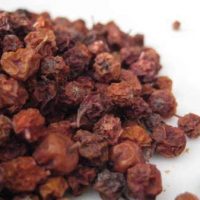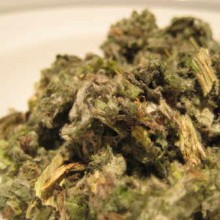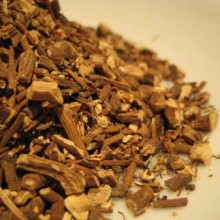Sweet Marjoram (Origanum majorana, Lamiaceae) is a cold-sensitive perennial herb or under shrub with sweet pine and citrus flavors. It is also called Knotted Marjoram and Majorana hortensis.
Bees love Sweet Marjoram – plant some in your garden and help the bee population
Oregano (Origanum vulgare, sometimes listed with Marjoram as Origanum majorana) is also called Wild Marjoram. It is a perennial common in southern Europe in dry copses and on hedge-banks, with many stout stems 30-80 cm high, bearing short-stalked somewhat ovate leaves and clusters of purple flowers. It has a stronger flavour and a more penetrating quality.
Pot Marjoram or Cretan Oregano (Origanum onites) has similar uses to marjoram.
Hardy Marjoram or Italian Marjoram is a cross of marjoram with oregano that is much more resistant to cold, but is slightly less sweet.
Traditional Uses for Sweet Marjoram:-
Marjoram is cultivated for its aromatic leaves, either green or dry, for culinary purposes; the tops are cut as the plants begin to flower and are dried slowly in the shade. It is often used in herb combinations such as Herbes de Provence and Za’atar.
History of Marjoram:-
The name marjoram (Old French majorane, Medieval Latin majorana) does not directly derive from the Latin word maior (major)
Marjoram was called amaracum in Latin, which in turn was taken from Greek amarakos. The origin of the Greek name is not known, but maybe it came from further East.
Marjoram’s reputation as aphrodisiac in Roman literature is probably due to the similarity of amaracum to Latin amor love, which is linguistically not related.
The forms in most modern European languages derive from amaracum and were additionally influenced by Latin maior greater via folk etymology. Examples include Lithuanian mairinas, Norwegian merian, French marjolaine, Serbo-Croatian mauran, Italian maggiorana, Romanian meghiran, Greek matzourana, and even Hebrew mayoran.






